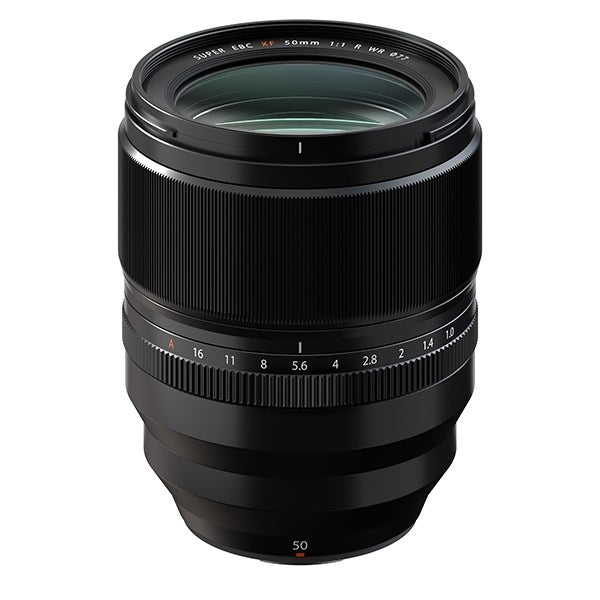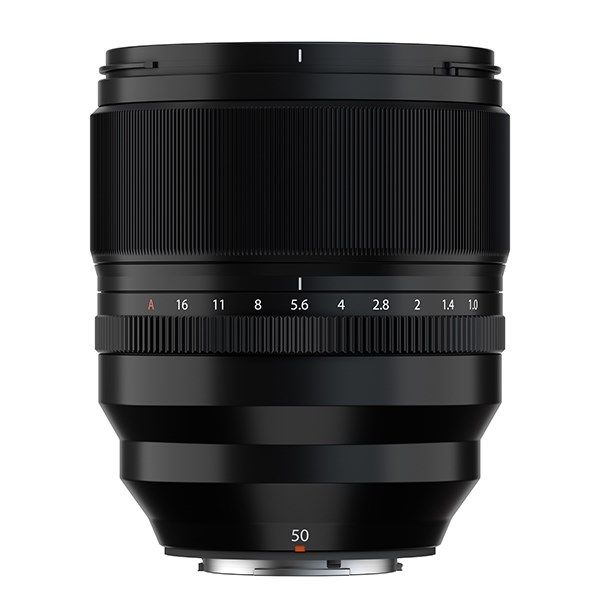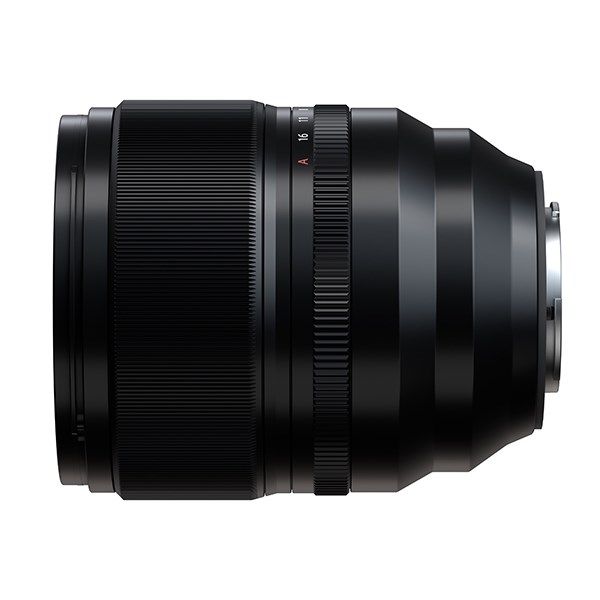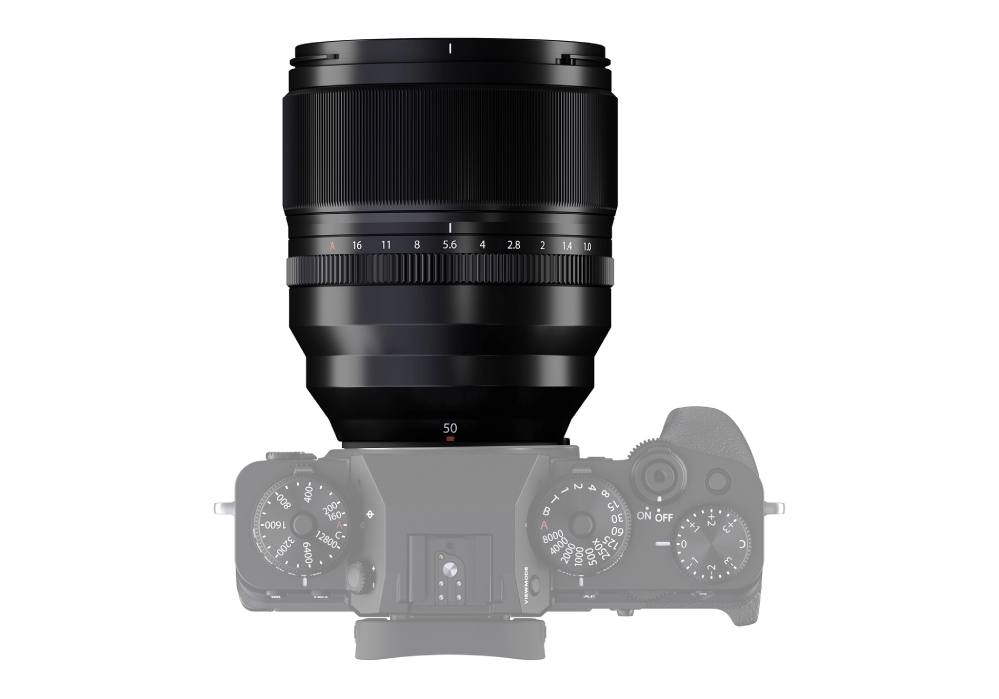Product Description
Fujifilm XF 50mm F1.0 R WR Lens
- Тhе реrfесt роrtrаіt lеnѕ
- Аn іnсrеdіblу wіdе аnd fаѕt f1.0 ареrturе
- Ассurаtе fасе dеtесtіоn аnd еуе АF
- DС аutоfосuѕ mоtоr fоr fаѕt аnd рrесіѕе АF
- Веаutіfullу ѕоft bоkеh
- Іmрrоvеd mаnuаl fосuѕ
- Соmрасt ѕіzе & wеіght fоr а f1.0 lеnѕ
- Wеаthеr аnd duѕt ѕеаlеd іn 11 рlасеѕ
- Wоrkѕ еffесtіvеlу dоwn tо -10?
- 9-blаdеd rоund dіарhrаgm
- Соnѕtruсtеd 12 еlеmеntѕ іn 9 grоuрѕ
- Іnсludеѕ 1 аѕрhеrісаl еlеmеnt аnd 2 ЕD еlеmеntѕ

The XF 50mm F1.0 R WR is an ultra-fast mid-telephoto prime lens with a focal length of 50mm (equivalent to 76mm in the 35mm film format) and a maximum aperture of F1.0. The fastest interchangeable lens Fujifilm has ever produced, it achieves incomparable resolving power thanks to its large-diameter design, which also produces beautiful bokeh, rendering backgrounds out of focus with a rich smoothness. The lens can also be stopped down for edge-to-edge sharpness, adding versatility to the way it can be used to make images.

The inclusion of a DC autofocus motor into XF 50mm F1.0 allows for quick and accurate autofocus even when images are being made at the maximum F1.0 aperture. Since this can result in an extremely shallow depth of field, the lens also utilizes X Series cameras’ Face / Eye AF function to achieve critical focus when making portraits, which is something that is quite difficult to achieve when focusing manually.
For times when manual focus is required, such as recording video, the manual focus ring provides 120 degrees of rotation to allow for precise, enhanced control and quick travel through the focus range to infinity. Lastly, despite being a large-diameter F1.0 lens, its weight, size, and weather-sealing make it a practical choice for any professional image-maker.

Achieve an incredibly shallow depth-of-field
The XF 50mm F1.0 R WR consists of 12 lens elements in nine groups and also contains one aspherical element and two ED elements to achieve optimum control of spherical aberration. Used at or near to its maximum F1.0 aperture, XF 50mm F1.0 R WR can produce an astonishingly narrow depth-of-field. Its precision-engineered, rounded diaphragm produces large, smooth bokeh for a professional look, allowing photographers to create portraits with striking simplicity and an almost three-dimensional quality with wonderful edge-to-edge sharpness. Photographers can use this new power in selective focus to keep only the subject’s eyes in focus and make captivating close-up character studies. But it’s not just for portraits. Take this lens out onto the street or into a lifestyle session and one can turn cluttered locations into clean backdrops with unrivalled subject separation.

Be ready to make images more easily in low-light conditions
The very wide maximum aperture on XF 50mm F1.0 R WR means there are more options when it comes to making images in low-light conditions. At night, or in darkened interiors, XF 50mm F1.0 R WR offers the widest apertures yet seen on an XF lens, allowing more light to be drawn in to make an image. XF 50mm F1.0 R WR lens also easily achieves fast shutter speeds that freeze movement and keep ISO settings lower for detail-rich results. Alternatively, combine high ISO settings with the F1.0 aperture for incredible versatility and use in other low-light applications like astrophotography.
World’s first F1.0 autofocus lens for mirrorless cameras
As the world’s first autofocus F1.0 lens made for any mirrorless system, including full-frame, XF 50mm F1.0 brings more light to the sensor than any previous XF lens, making it possible for the autofocus to operate at -7EV luminance level. The previous limit of -6EV luminance level was achieved using lenses with a maximum aperture of F1.4, (2) X Series users now have fast and precise low-light autofocus, even in near-darkness. With the added benefits of on-sensor Phase Detection Autofocus (PDAF), Face/ Eye AF and a powerful DC motor, precise and fast autofocus at shallow depths of field is now a possibility.

Precise focus for those critical moments
To make the most of its super-shallow depth-of-field, focusing must be precise. As a result, XF 50mm F1.0 has a focus ring that is eight times more accurate than any previous XF lens. This makes it possible to change the focus from the minimum focusing distance to infinity very precisely. For this, XF 50mm F1.0 R WR uses 120º of rotation in its focusing ring to let users focus manually without error – and achieve accurate focus when using an X Series camera’s Focus Peaking and Focus Assist modes. The 120º of rotation also makes autofocus movements notably precise and deliberate, while the lens’s engineering is designed to minimize focus shift effects when making images.

Engineered to keep the images coming
Despite being a fast, F1.0 lens, XF 50mm F1.0 R WR is a lens that makes amazing pictures almost anywhere. Measuring 103.5mm (4.07in) long and weighing 845 grams (1.86 pounds), the lens is still quite compact and portable. Like all other weather-resistant XF Lenses, it is sealed in 11 locations to protect against moisture and dust, as well as being capable of use in temperatures down to -10°C (14°F). When allied to a similarly specified, weather-resistant X Series mirrorless digital camera body, XF 50mm F1.0 R WR lets you make unique images in the toughest environments.
For full specifications click Here


























